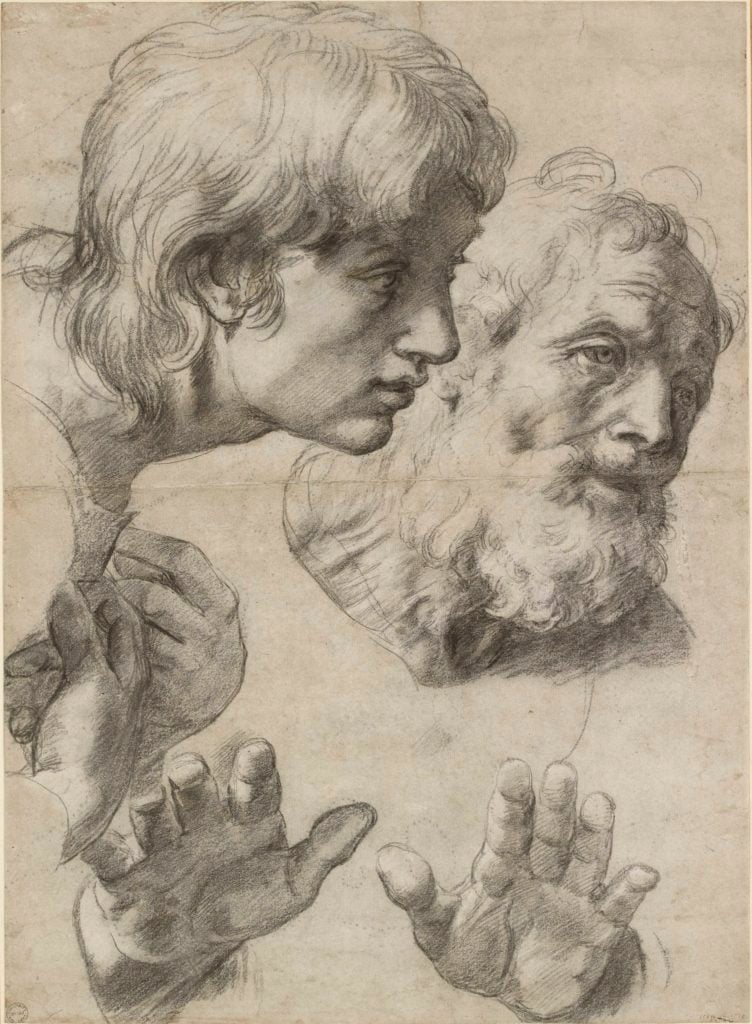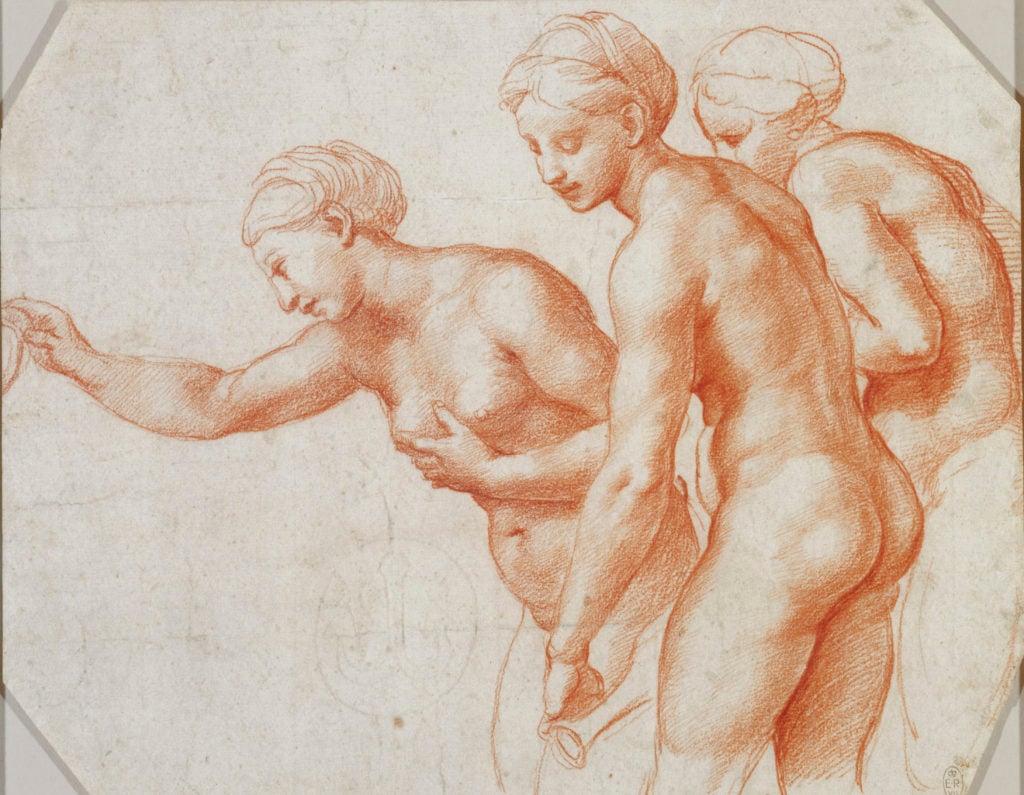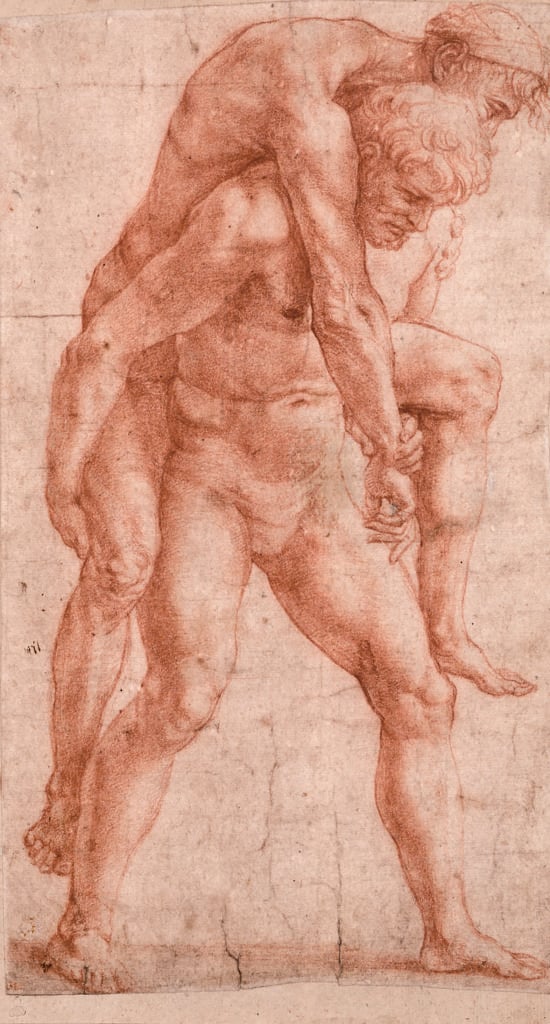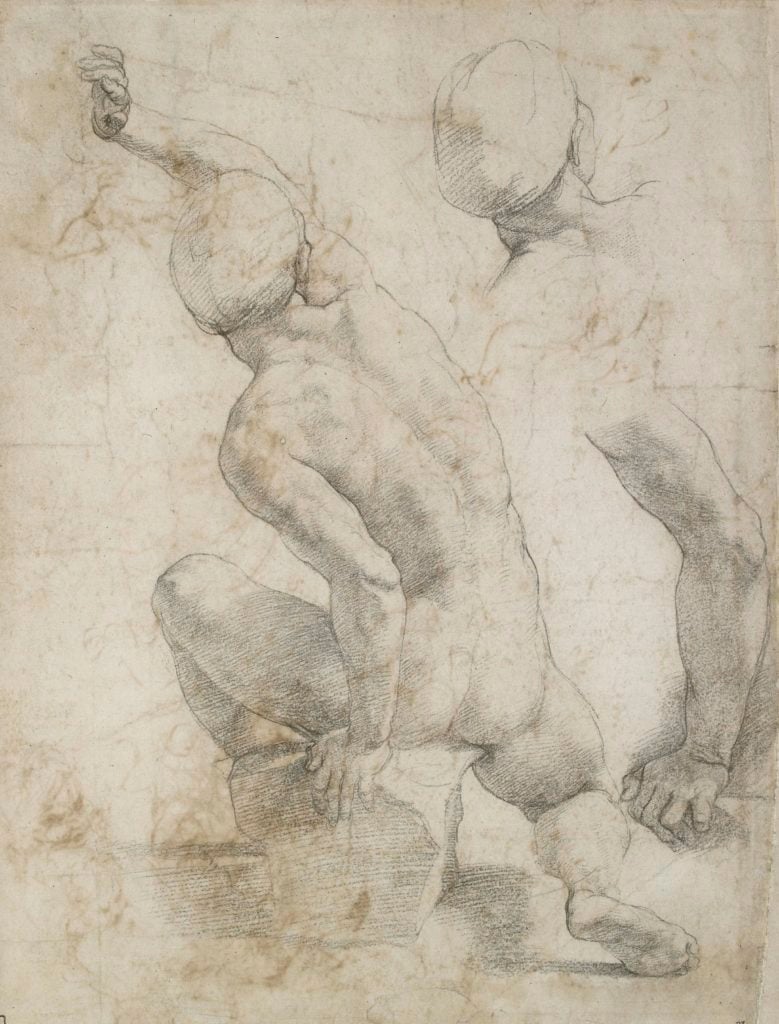Art World
Forget His Paintings, Raphael’s Drawings Reveal His True Genius
A new exhibition of the artist's drawings shows the real brilliance of the master's gift.

A new exhibition of the artist's drawings shows the real brilliance of the master's gift.

Henri Neuendorf

Raphael is unquestionably one of the greatest artists in history, but his paintings have, at times, been described as a little unimaginative due to their strict formalist design. In contrast, the Renaissance master’s drawings are deemed highly expressive, eloquent, and exemplary of the artist’s sheer talent.
“We often think of Raphael as an artist who’s quite idealizing and graceful, and possibly a bit bland,” Dr. Catherine Whistler of the Ashmolean Museum said in a video. “But if you start looking closely, the drawings are very different. Raphael emerges.”

Raphael, Study for the Three Graces (ca. 1517-18). Courtesy of Ashmolean Museum, University of Oxford.
The Ashmolean Museum at the University of Oxford is currently showing 120 drawings by Raphael, the most comprehensive survey of such works since 1983. The show is being billed as a “once-in-a-lifetime” opportunity to see the 500-year-old drawings that are almost never displayed—let alone altogether at once—due to their fragility and sensitivity to light.
Signs of Raphael’s genius emerged early on. By some historical accounts, Raphael may have begun his apprenticeship as young as eight years old. His father was an artist at the court of the Duke of Urbino and taught the young Raphael basic skills. Raphael later turned to art for comfort, after his father’s unexpected death left him orphaned at age 11.

Raphael, A Man Carrying an Older Man on his Back (ca. 1513-14). Courtesy of Ashmolean Museum, University of Oxford.
By the time he was a teenager he had already completed his training, quickly surpassing his father’s success and reputation. Raphael was soon competing for commissions with the two towering stars of the time: Michelangelo and Leonardo. (At the time, he was considered more versatile than Michelangelo, and more prolific than the aging Leonardo.)
In 1508—at the tender age of 26—Raphael was invited to Rome by the Pope Julius II to complete a fresco in the Pope’s private library in the Vatican Palace, an extraordinary honor for any artist, let alone one as young as Raphael. He beat out several more accomplished artists to win the commission, including Michelangelo, which sparked a lifelong rivalry.

Raphael, Sheet With Inventive Ideas and Studies of a Seated Male Nude (ca. 1511-14). Courtesy of Ashmolean Museum, University of Oxford.
But Raphael’s meteoric success came at a price. Shortly after his early years in Rome, the young artist assembled a large workshop of around 50 assistants—an unusually high number for the time—which resulted in a gradual loss of quality and poor attention to detail, as he outsourced more and more work to his apprentices. His drawings and studies, however, were always done by his own hand. It was the medium through which Raphael revealed his true skill and expressiveness.
In the exhibition’s accompanying catalogue, Dr. Whistler and fellow Raphael scholar Ben Thomas write, “Raphael’s drawings reveal processes of thinking, improvising, observing, recalling from memory, and revising, using gestures both rapid and considered, which speak of an embodied artistic intelligence…. Eloquence is traced in the tactile and gestural qualities of the drawings and in their expressive power—aspects that also make the drawings ‘speak’ in arresting ways to viewers today.”
“Raphael: The Drawings” is on view at the Ashmolean Museum at the University of Oxford, June 1–September 3, 2017.